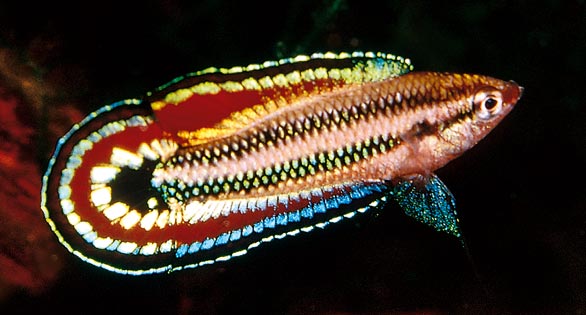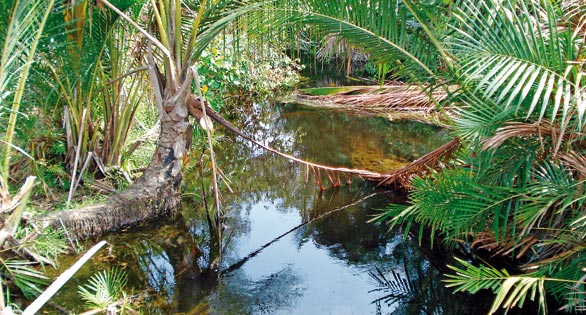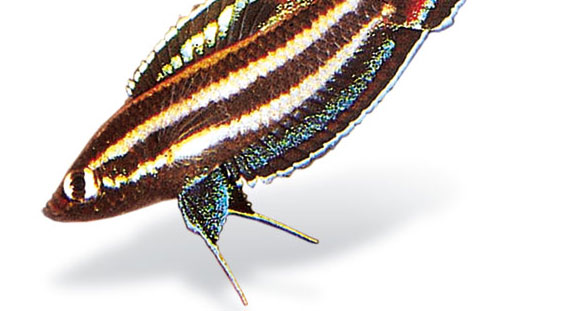Traveling in licorice gourami biotopes
article and images by Horst Linke
Licorice gouramis are very special fishes, but they can be quite challenging to care for. Information on their natural habitat is indispensable in order to provide them with optimal living conditions in the aquarium. How do these fishes live in the wild? What niche biotopes do they occupy? What water parameters occur in their natural habitat, and can we replicate those conditions so we can keep licorice gouramis in our aquariums?
The fact that I have been a devoted fan of the colorful little Parosphromenus species for many years has been reason enough for me to carefully investigate their distribution regions during my travels. In recent years I have been able to find around 20 of the roughly 30 different species, both described and undescribed scientifically, and study their habitats.
Blackwater biotopes
All the licorice gouramis of the genus Parosphromenus that are known live in stained blackwaters. Note, however, that blackwaters aren’t really black, but a dark red-brown color, produced in part by peat-like materials but mainly by the decomposing leaves of trees and scrub that grow close to the banks. These dead leaves accumulate in multiple thick layers and release numerous substances, especially humic substances, which prevent any noteworthy population of bacteria in the water. These substances are very important to the health and well-being of the resident fishes, and often even essential for their survival.
The staining of the water can be particularly strong during the rainy season or after a heavy rainfall, as the runoff percolates through the layers of leaf litter and peat and washes large amounts of humic substances into the rivers. However, despite the variation in color, the water parameters alter only slightly during these seasonal changes; the water is always very soft and mineral-poor, very clean, and very acid, with a carbonate hardness that is barely measurable.
It can also happen, though, that the water color becomes temporarily lighter following very heavy rainfall if the runoff doesn’t percolate through peat-like material. It is then only weakly brownish, and as the result of minerals being washed in the pH may rise briefly from below pH 4 to slightly more than pH 5. However, the rest of the water parameters usually remain unchanged.
I would now like to describe a number of examples of the natural habitats that I have visited at a variety of seasons over the course of the years.









I would like to know more about this species. Are they aggressive, size tank they are best suited for and are they expensive. Do they school or are they loaners. Thanks Judy